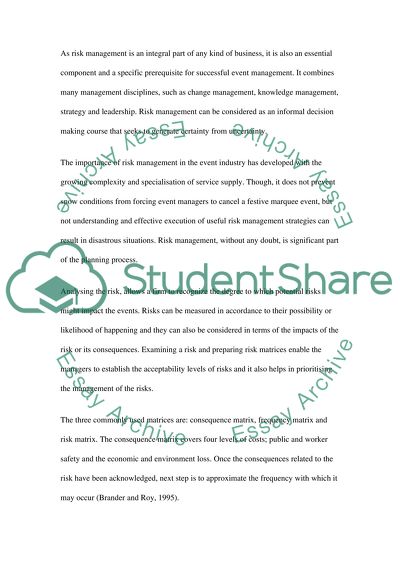Cite this document
(“Critically evaluate the need for risk management in the event industry Essay”, n.d.)
Critically evaluate the need for risk management in the event industry Essay. Retrieved from https://studentshare.org/miscellaneous/1575808-critically-evaluate-the-need-for-risk-management-in-the-event-industry
Critically evaluate the need for risk management in the event industry Essay. Retrieved from https://studentshare.org/miscellaneous/1575808-critically-evaluate-the-need-for-risk-management-in-the-event-industry
(Critically Evaluate the Need for Risk Management in the Event Industry Essay)
Critically Evaluate the Need for Risk Management in the Event Industry Essay. https://studentshare.org/miscellaneous/1575808-critically-evaluate-the-need-for-risk-management-in-the-event-industry.
Critically Evaluate the Need for Risk Management in the Event Industry Essay. https://studentshare.org/miscellaneous/1575808-critically-evaluate-the-need-for-risk-management-in-the-event-industry.
“Critically Evaluate the Need for Risk Management in the Event Industry Essay”, n.d. https://studentshare.org/miscellaneous/1575808-critically-evaluate-the-need-for-risk-management-in-the-event-industry.


